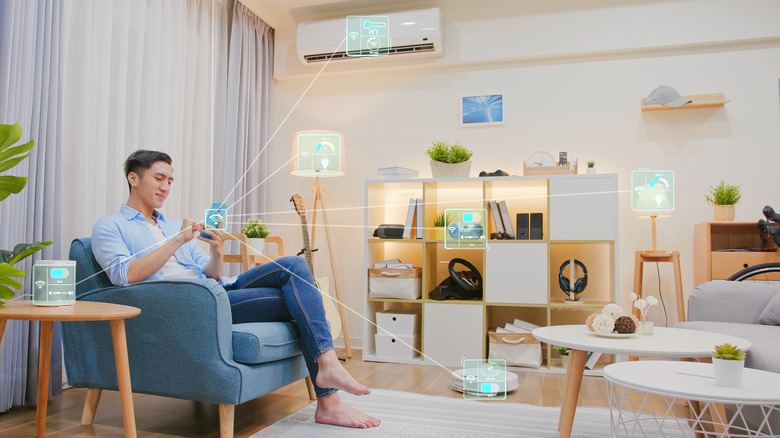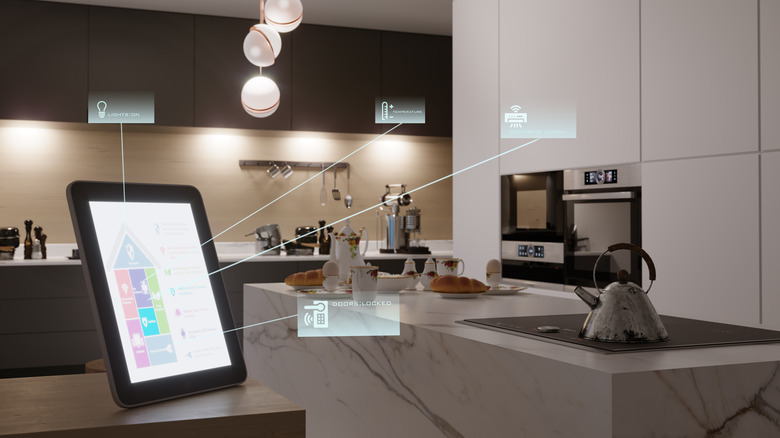If You Use Smart Home Devices, Put Them On A Separate WiFi Network ASAP, Here's Why
Transforming a mundane apartment into a technological landscape with smart devices adds a number of benefits to one's life. A smart speaker with a screen can bring up a recipe while the user is in the kitchen cooking. Meanwhile, their Roomba is in the living room, vacuuming the dust and crumbs they didn't have time to get to earlier. Even when not at home, a smart thermostat adjusts the temperature in the house for energy efficiency and comfort. These must-have smart gadgets eliminate time-consuming tasks for users, allowing them to dedicate their time to more fulfilling responsibilities.
As many benefits as a smart house brings, it's not without its headaches. Much like a smartphone and computer, smart home devices require access to the internet. This is primarily so the devices can talk to one another, the owner can manage their settings, and an occasional update can take place. However, access to the internet can make owning a smart home device a bit of a challenge. For users to make it easier on themselves, they should immediately keep their smart devices on a separate network from their personal devices.
Improved security precautions
There's no bigger reason than security to connect all smart home devices to a separate network. Somebody finding their way into a home's personal network can have lifelong repercussions. News reports about hackers gaining control of a smart device like a baby-monitoring camera have happened, which is a significant security concern. An especially skilled hacker could use that access to launch a denial of service to the device and any other device connected to the same network.
It doesn't have to be something with a camera, either. Digital invaders could use something as benign as a smart speaker to wreak havoc. If bad actors can gain control of those smart devices, they can lock owners out of their laptops or, worse, gain access to sensitive documents saved on their computers. This leads to stolen identities and computers being held for ransom. An isolated network for smart devices adds a layer of protection, as it limits the devices connected to the main network you use for your phone and computer.
Fewer devices to congest the network
With smart devices rising in popularity, homes all around the world are becoming more digital by the day. A single individual might not have more than four devices running on their network. However, somebody committed to transforming their house into a smart home with some game-changing devices might have upwards of 10. When too many devices operate on the same network, users are going to experience low bandwidth, which makes simple web browsing excruciatingly slow.
When a network slows down too much, the connection can timeout and halt all communication devices have with the router. Congestion is especially likely if the owners connect their devices to a 2.4GHz network since it only supports up to 11 channels in North America.
This isn't an issue if the only devices on the network are smart ones, but when that includes personal computers, laptops, and phones from residents and guests alike, it adds up and takes its toll. It only gets worse when using smart devices that don't connect to a hub, such as some WiFi light bulbs.


